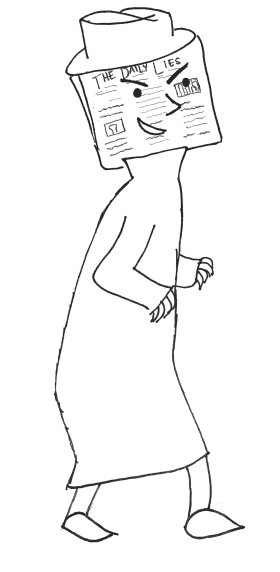
The 2016 word of the year is post-truth, which the Oxford Dictionaries defines as “relating to or denoting circumstances in which objective facts are less influential in shaping public opinion than appeals to emotion and personal belief.” Also this past year, Scottie Nell Hughes, a CNN journalist and political commentator, declared, “facts don’t exist.”
Hm. In a world where emotional appeals and gut-feelings reign supreme, how are we supposed to come to consensus and have meaningful compromise? Clearly, post-truth politics dominated the presidential election, but this intentional and caustic ignorance of fact has begun taking over all media.
Recently, a far-fetched conspiracy theory about Hillary Clinton running a child-trafficking ring out of a pizza parlor in D.C. unraveled as a news story on major news platforms. The fable originated from an obscure Tweet making bold claims about a police investigation pointing to Clinton’s pedophilia ring. From there, the absence of evidence spiraled: greater news platforms picked up the story and added their own fabrications. The adult version of the game “telephone” culminated in an unfounded smear piece, implicating not only Mrs. Clinton but additionally the innocent owners of the pizza parlor, and further resulted in an armed gunman’s seizure of the parlor to liberate the non-existent child sex slaves.
This unfolding demonstrates many issues with modern news reporting. All too often, authors deceive readers with their sources: either they wrongfully interpret sources they do not understand, knowingly use erroneous sources, misappropriate sources out of context, or scrap sources altogether and fabricate stories. Another deception journalists occasionally use is they work in tandem with sources to foment each’s argument but in reality, neither source has any credibility. For example, an article cites a scientist’s experiment as evidence for credibility, and the scientist simultaneously cites the article as evidence for the experiment’s credibility. In this scenario, the article gains authority from the experiment and the experiment gains authority from the article—while neither the article nor the experiment needs any truthful content to back each’s respective credibility. This sort of circumvented citing technique, combined with outright invention of fact, facilitated the so-called Pizzagate scandal.
Further, bias is another culprit in the decadence of news. It is unreasonable to expect a media outlet to be free of all bias; when a journalist recounts an event, even if factual without opinion, the journalist’s selection of detail tends towards a particular purpose. Reading the New York Times and watching Fox News during the election season, any viewer could see which candidate the outlets backed, as they consistently told the stories that worked in favor of a specific candidate. The issue of separating news from bias isn’t one-sided; the New York Times, CNN, MSNBC and NPR command the left; primarily Fox News helms the right. Though these sources have both liberal and conservative writers, overall, the platforms have very circumscribed attitudes and purposes.
The ultimate question arises: how can any news story be trusted, if all are written by inherently biased authors and published by inherently biased outlets? Morally and ethically, the responsibility to produce news content that is factual and without editorial comment falls on the journalists. However, unfortunate as it is, this responsibility is neglected. With raging bias and strategically planted leaks, all news must be verified and vetted through an analytical process in order to be taken as anything more than gossipy, self-serving speculation. Readers, for you, that means researching different authors and stories and pinpointing their biases so that you may read their “news” content and narrow down for yourself what is true. I’m afraid you won’t be left with too much. It has become acceptable to tell unconfirmed stories and even blasphemous lies as the truth and the task of confirming sources and facts has fallen by the wayside.
Now is the time to hold journalists accountable for their content. A world without truth, a world of post-truth, is one in which we all suffer in disconcert and chaos.
